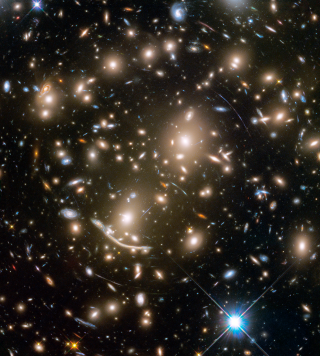Bibcode
San Roman, I.; Cenarro, A. J.; Díaz-García, L. A.; López-Sanjuan, C.; Varela, J.; González Delgado, R. M.; Sánchez-Blázquez, P.; Alfaro, E. J.; Ascaso, B.; Bonoli, S.; Borlaff, A.; Castander, F. J.; Cerviño, M.; Fernández-Soto, A.; Márquez, I.; Masegosa, J.; Muniesa, D.; Pović, M.; Viironen, K.; Aguerri, J. A. L.; Benítez, N.; Broadhurst, T.; Cabrera-Caño, J.; Cepa, J.; Cristóbal-Hornillos, D.; Infante, L.; Martínez, V. J.; Moles, M.; del Olmo, A.; Perea, J.; Prada, F.; Quintana, J. M.
Referencia bibliográfica
Astronomy and Astrophysics, Volume 609, id.A20, 38 pp.
Fecha de publicación:
1
2018
Revista
Número de citas
16
Número de citas referidas
15
Descripción
We present a technique that permits the analysis of stellar population
gradients in a relatively low-cost way compared to integral field unit
(IFU) surveys. We developed a technique to analyze unresolved stellar
populations of spatially resolved galaxies based on photometric
multi-filter surveys. This technique allows the analysis of vastly
larger samples and out to larger galactic radii. We derived spatially
resolved stellar population properties and radial gradients by applying
a centroidal Voronoi tessellation and performing a multicolor photometry
spectral energy distribution fitting. This technique has been
successfully applied to a sample of 29 massive (M⋆ >
1010.5M⊙) early-type galaxies at z < 0.3
from the ALHAMBRA survey. We produced detailed 2D maps of stellar
population properties (age, metallicity, and extinction), which allow us
to identify galactic features. Radial structures were studied, and
luminosity-weighted and mass-weighted gradients were derived out to
2-3.5 Reff. We find that the spatially resolved stellar
population mass, age, and metallicity are well represented by their
integrated values. We find the gradients of early-type galaxies to be on
average flat in age (∇log AgeL = 0.02 ± 0.06
dex/Reff) and negative in metallicity
(∇[Fe/H]L = -0.09 ± 0.06 dex/Reff).
Overall,the extinction gradients are flat (∇Av = -0.03
± 0.09 mag/Reff ) with a wide spread. These results
are in agreement with previous studies that used standard long-slit
spectroscopy, and with the most recent IFU studies. According to recent
simulations, these results are consistent with a scenario where
early-type galaxies were formed through major mergers and where their
final gradients are driven by the older ages and higher metallicity of
the accreted systems. We demonstrate the scientific potential of
multi-filter photometry to explore the spatially resolved stellar
populations of local galaxies and confirm previous spectroscopic trends
from a complementary technique.
Based on observations collected at the German-Spanish Astronomical
Center, Calar Alto, jointly operated by the Max-Planck-Institut für
Astronomie (MPIA) at Heidelberg and the Instituto de Astrofísica
de Andalucía (CSIC).
Proyectos relacionados

Estudios Cinemáticos, Estructurales y de Composición, de los Medios Interestelares e Intergalácticos
El objetivo básico del proyecto es investigar la evolución de las galaxias mediante el entendimiento de la interacción del medio interestelar y las estrellas. La técnica principal que utilizamos es la cinemática bidimensional de galaxias enteras observada por nuestro instrumento GHaFaS, un interferometro Fabry Perot en el telescopio William
Prof.
John E. Beckman

Evolución de Galaxias en Cúmulos
Las estructuras en el Universo, a todas las escalas de masa, se han formado de una forma jerárquica y principalmente producidas por fusiones de galaxias. Sin embargo, esta formación jerárquica de las galaxias está modulada por el entorno en el cual se crean y evolucionan. Mientras que las galaxias de campo presentan una evolución pasiva, los
Jairo
Méndez Abreu

Evolución de Galaxias
El estudio de la evolución de las galaxias es un tema crucial de la Astronomía Extragaláctica moderna. Permite vincular las galaxias locales con las primeras que existieron en el universo. Pero para poder abordarlo es preciso obtener censos estadísticamente significativos de galaxias de distintas luminosidades, a distintas distancias
Jorge
Cepa Nogue